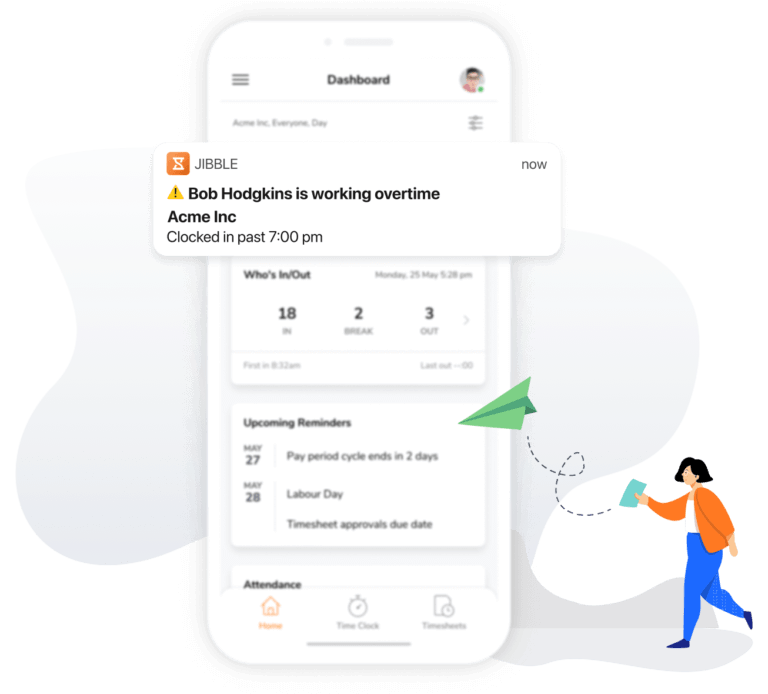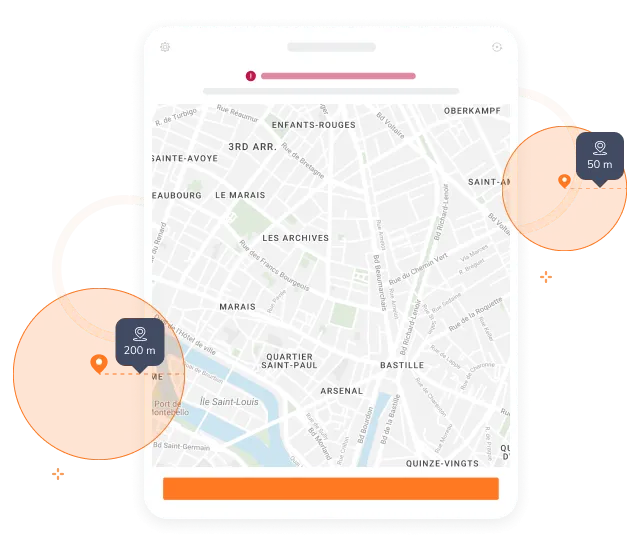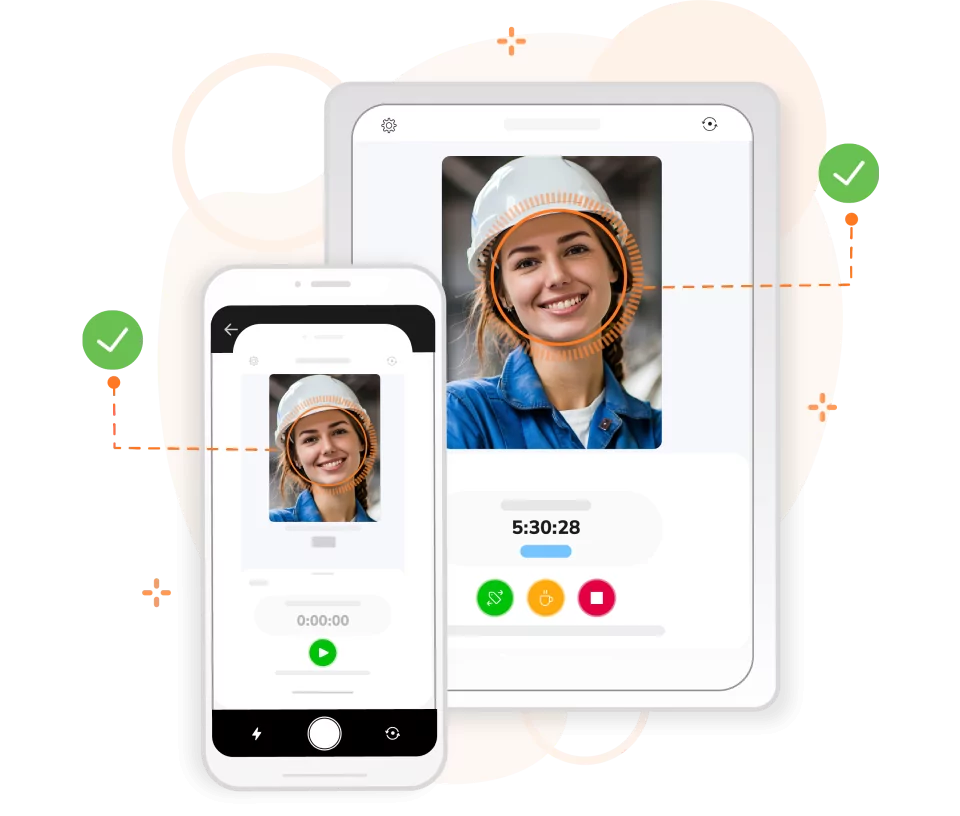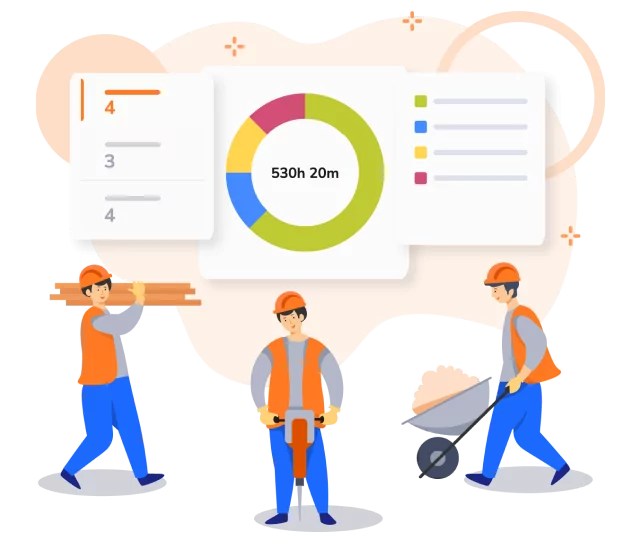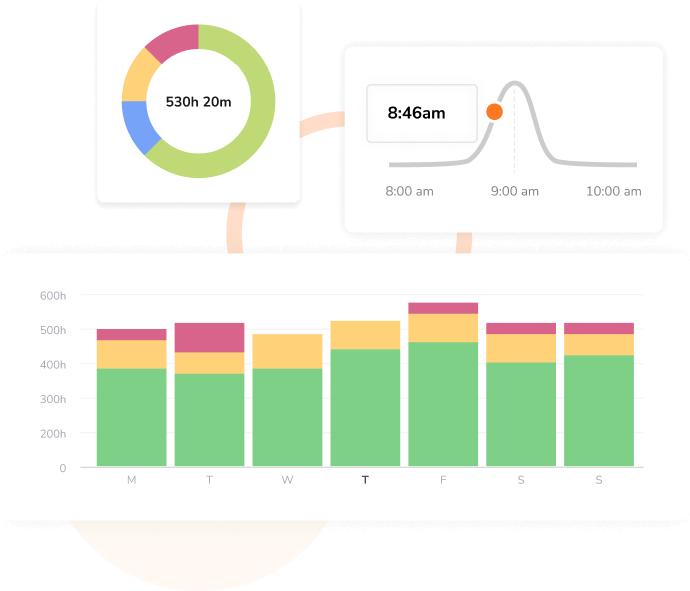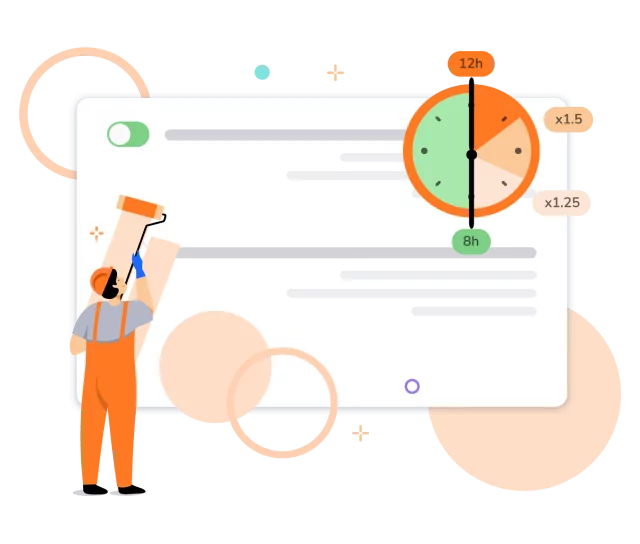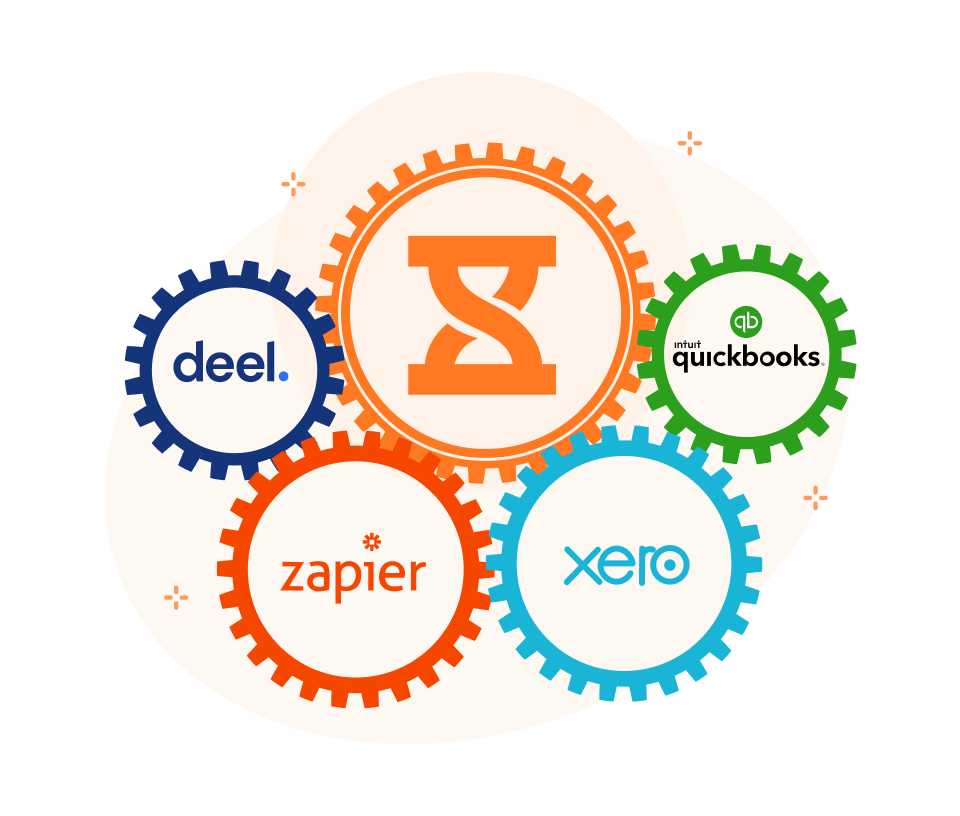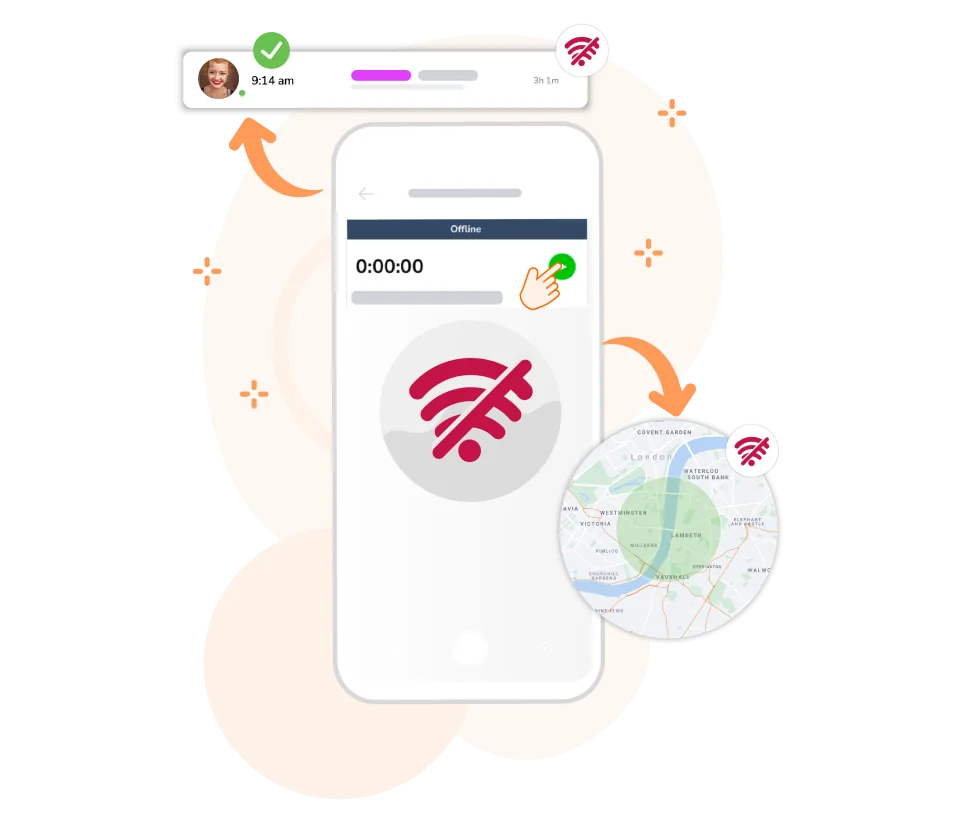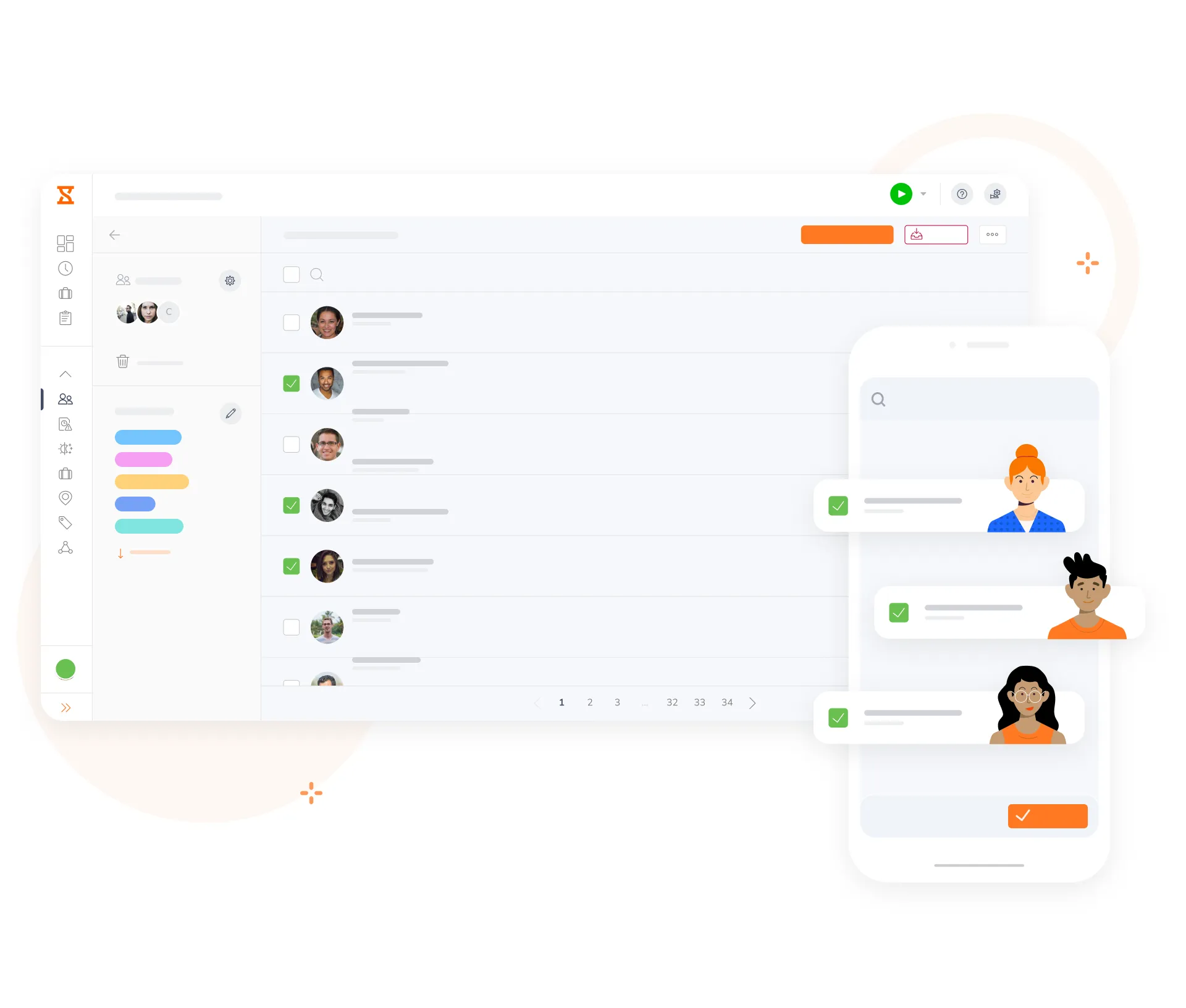10 Must-Have Features in Construction Time Tracking Software
Much like how you would carefully choose the right tools and materials for a construction project, you also need the right construction time tracking software features to effectively manage your team’s time and resources. There’s a sea of time tracking software out there, so much so that choosing the right one can feel like a real challenge. To help you make a concrete choice, we’re going to outline the key features that a solid construction time tracking software should have under its belt. Let’s get into it!
10 Must-Have Features for a Construction Time Tracking Software
1. User-friendly
You already have a lot on your plate, the last thing you need is an unnecessarily complex time tracking system that’s hard to learn and even harder to implement. So what makes construction time tracking software user-friendly?
Well, it’s all about simplicity, accessibility, and intuitive design. A clean interface is a good start. Users should be able to easily find and use key features without needing extensive training. Time tracking should also be relatively easy and efficient, allowing team members to log hours in just a few taps.
2. Mobile Accessibility
Flexibility is key for multi-site construction operations. You need to be able to track time and manage your team without having to be tied to your desk. With a mobile time tracking app, you can monitor project progress and manage resources from anywhere—whether you’re on-site or off-site.
3. Geofencing and GPS Tracking
Geofencing and GPS tracking can be a real game-changer for multi-site management. With geofencing you get to create virtual boundaries around the different construction sites you manage. Workers will only be able to track time when they’re within authorized locations so you can be sure everyone is where they need to be.
GPS tracking on the other hand, lets you track employee location in real-time. This enables managers to monitor that resources are allocated efficiently and that workers are adhering to schedules. It’s an especially useful feature for multi-site construction tracking.
4. Facial Recognition
The American Payroll Association estimates that 75% of U.S. companies lose money because of buddy punching. This happens when one worker clocks in or out for another worker who isn’t actually at the job site. Workers may do this for different reasons, like covering up for being late, taking a longer lunch break, or leaving work early without facing any consequences.
In the construction industry, where large teams are spread across multiple job sites, this problem can be even more costly. To solve this problem once and for all, it helps to have a construction time tracking software with facial recognition.
With facial recognition, the software captures and verifies the worker’s face at the moment they clock in or out. This process typically involves the employee standing in front of a camera, which scans their facial features and compares them to a stored image in the system. If the facial data matches, the system allows the clock-in or clock-out to proceed, ensuring that only authorized personnel are recording their hours.
5. Project and Activity Tracking
When running a construction business, it’s essential to have a clear view of where every hour is spent. A time tracking solution should allow you to assign time entries to specific projects or activities. By zooming in on where labor hours are going, you can identify inefficiencies and allocate your resources across sites more effectively.
Understanding how time is distributed across various tasks not only helps in pinpointing areas that need improvement but also plays a vital role in cost control.
6. Reporting and Analytics
You’re time tracking blind if you don’t have access to detailed and actionable reports. Robust reporting features are crucial for understanding labor costs, project performance, and resource use.
A good construction time tracking software should offer customizable reports, making it easy to generate and visualize data. Clear and intuitive reports with charts and graphs help you quickly identify spending trends and inefficiencies.
7. Compliance Features
The right time tracking tool should automatically track overtime hours, rest periods, and break times, helping you adhere to construction labor laws specific to your region. Additionally, it should allow you to set custom hourly rates and pay rules to ensure compliance with local wage regulations. This feature is crucial not only for protecting your business from potential legal issues and penalties but also for ensuring fair treatment of your workers.
8. App Integrations
If you have several apps in your workflow, it’s best to choose time tracking software that can integrate with them seamlessly. Integrations with Microsoft Teams or Slack allow employees to clock in and out directly from their messaging app, while compatibility with accounting tools like Xero or QuickBooks ensures seamless data transfer for accurate billing.
These integrations reduce workflow friction, enhance efficiency, and keep your team organized. Let’s face it, nobody wants to have to constantly switch between multiple apps.
9. Offline Tracking
If your team often works in remote areas with shaky internet, offline tracking is a lifesaver. It allows your crew to log their hours and activities, even when they’re not connected. Once they’re back online, all the recorded data syncs automatically with the main system. This means no time entries are lost, which helps keep accurate records for payroll and project management.
10. Scalability and Customization
When choosing a construction time tracking software, think about your future needs as well as your current ones. As your business grows and takes on more projects, the solution should be able to scale effortlessly, managing additional sites and teams without losing efficiency – if it can accommodate an unlimited number of users, the better. Beyond that, it should offer customization options like adding custom fields or workflows tailored to your unique operations.
If you’re looking for a scalable time tracking solution that won’t burn a hole in your pocket, Jibble is a great way to go. This time tracking software is 100% FREE for unlimited users making it an ideal option for businesses of all sizes.
How Do You Choose the Right Time Tracking Software for Your Business?
Every business has unique time tracking needs, so it’s important to find a solution that fits your specific operations. Think of this list of features as more of a guideline than a one-size-fits-all rulebook. The choice of which features your time tracking software should include will depend entirely on your team’s workflow and the complexity of your projects.
That said, it helps to have the right tools under your belt to ensure smooth operations. The more tailored your software is to your business, the easier it will be to stay on track, manage labor costs, and nail project success.
Once you’ve chosen the right time tracking software for your business, it’s time to kick off implementation. Here’s how to implement time tracking software in construction successfully.

